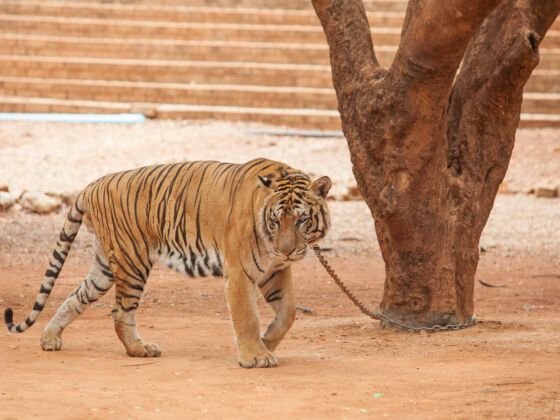BANGKOK, Thailand — Tigers don’t like us. When humans approach, their raw instincts tell them to flee or claw our faces off. This is perhaps a wise reaction since our species has wiped out 97 percent of the world’s tiger population in the last century.
But in Thailand’s western hills, there’s a place where nature’s code is inverted and tigers will tolerate wave after wave of unfamiliar humans.
